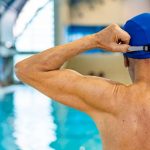NEW STUDIY. An ultra-sensitive blood test that reflects brain damage after acute ischemic stroke – and also predicts functional outcome. This is a discovery that is expected to be of great significance in the future. The findings are described in a study from the University of Gothenburg. The study, published in the journal Neurology, was conducted by a group of researchers at Sahlgrenska Academy at the University of Gothenburg led…
Groundbreaking findings bring hope for faster and better recovery after stroke
NEW STUDY. An effective treatment for most stroke victims — even those who, today, are unable to gain access to care within the first few hours. This is the goal of an experimental method that has been tested with great success in an international study headed by the University of Gothenburg. The work now published in the Journal of Clinical Investigation is a multicenter study in which researchers at the…
Exercise seems to protect against major brain hemorrhage
NEW STUDY. Regular physical activity and exercise may reduce bleeding in individuals with intracerebral hemorrhage, a University of Gothenburg study shows. The researchers emphasize the importance of physical activity to protect the brain. The study, published in the journal Stroke and Vascular Neurology, analyzed data on 686 people treated for intracerebral hemorrhage at Sahlgrenska University Hospital in Gothenburg during the years 2014 to 2019. The results are based on a…
Physical activity crucial for poststroke recovery
NEW STUDY. After a stroke, physical activity can be pivotal to successful recovery. People who spend four hours a week exercising after their stroke achieve better functional recovery within six months than those who do not, a University of Gothenburg study shows. The study, now published in the scientific journal JAMA Network Open, is based on data concerning 1,500 stroke patients in 35 Swedish hospitals. The participants were grouped according…
Light physical activity linked to milder symptoms from intracerebral hemorrhage
NEW STUDY. Four hours of light physical activity per week can now be linked to milder symptoms from intracerebral hemorrhage, and also to better survival rates, a University of Gothenburg study shows. Intracerebral hemorrhage is the most serious type of stroke with few treatment options. About one in ten cases of stroke is an intracerebral hemorrhage, a condition caused by bleeding within the brain tissue, with high risk of death…





